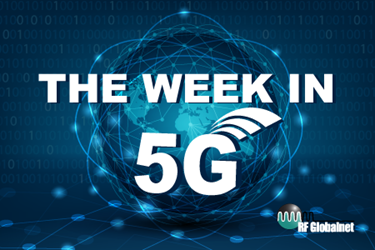The Week in 5G: 9/22/2020 — EU Authorities Worry At Lagging 5G Rollout; Pentagon Wants Its Own 5G Networks
By Ed Biller

Late last week, The European Commission (EC) issued a recommendation detailing how European Union member states can swiftly and cost-effectively deploy 5G infrastructure.
Per Light Reading, the EC has proposed “a common approach by means of a ‘toolbox’ that defines best practices, including ‘realistic measures’ to assign radio spectrum for 5G networks under investment-friendly conditions.”
The EC hopes to have this “toolbox” agreed upon by March 30, 2021, working to streamline the administrative and permit processes as part of the initiative.
The recommendation comes on the heels of an assessment paper on the 5G rollout in Europe, released by the European Round Table for Industry (ERT), that laments “Europe is far behind other world regions.”
“On the deployment of infrastructure, only ten 5G base stations per million capita have been deployed in 5G-active EU Member States, compared to 1,500 base stations per million capita in South Korea,” states and ERT release. “Europe fares equally poorly in upgrading 4G base stations to 5G as well, with just one percent having been enhanced this way, compared with 98 percent in South Korea.”
At the other end of the rollout spectrum is China, where more than 110 million users have enrolled for 5G plans, reports TechCrunch, citing an announcement by the China Academy for Information and Communications Technology (CAICT).
That number would place China as the largest 5G market in terms of user size, notes the report, adding that China is adding an average of 15,000 new 5G base stations every week and plans to achieve The 600,000 new base stations by the end of 2020.
In technology news, the demand for cobalt – an ingredient in the large batteries used to power electric vehicles – is expected to increase dramatically as the power demands of 5G-capable phones outpace their 4G predecessors.
“Cobalt demand estimates mostly vary between 100,000 and 130,000 tonnes for this year, doubling to between 200,000 and 260,000 tonnes in 2025,” reports Reuters. “Analysts expect a balanced cobalt market this year and deficits from 2022 as sales of electric vehicles and 5G phones accelerate.”
Meanwhile, Inside Defense reports the U.S. Department of Defense is considering owning and operating its own 5G networks to support domestic operations.
A request dated Sept. 18, 2020, states the Pentagon is seeking "innovative solutions and alternative approaches to enable [dynamic spectrum sharing] within the department's currently allocated spectrum with the goal of accelerating spectrum-sharing decisions and 5G deployment."
Finally, in business news, Ericsson has agreed to acquire Cradlepoint, a US-based provider of wireless edge WAN 4G and 5G enterprise solutions, for a total of $1.1 billion. The transaction is expected to close before the end of Q4 2020 and makes Cradlepoint a fully owned subsidiary of Ericsson.
“The investment is key to Ericsson’s ongoing strategy of capturing market share in the rapidly expanding 5G Enterprise space… [and] complements existing 5G Enterprise portfolio which includes Dedicated Networks and a global IoT platform,” states an Ericsson press release.
